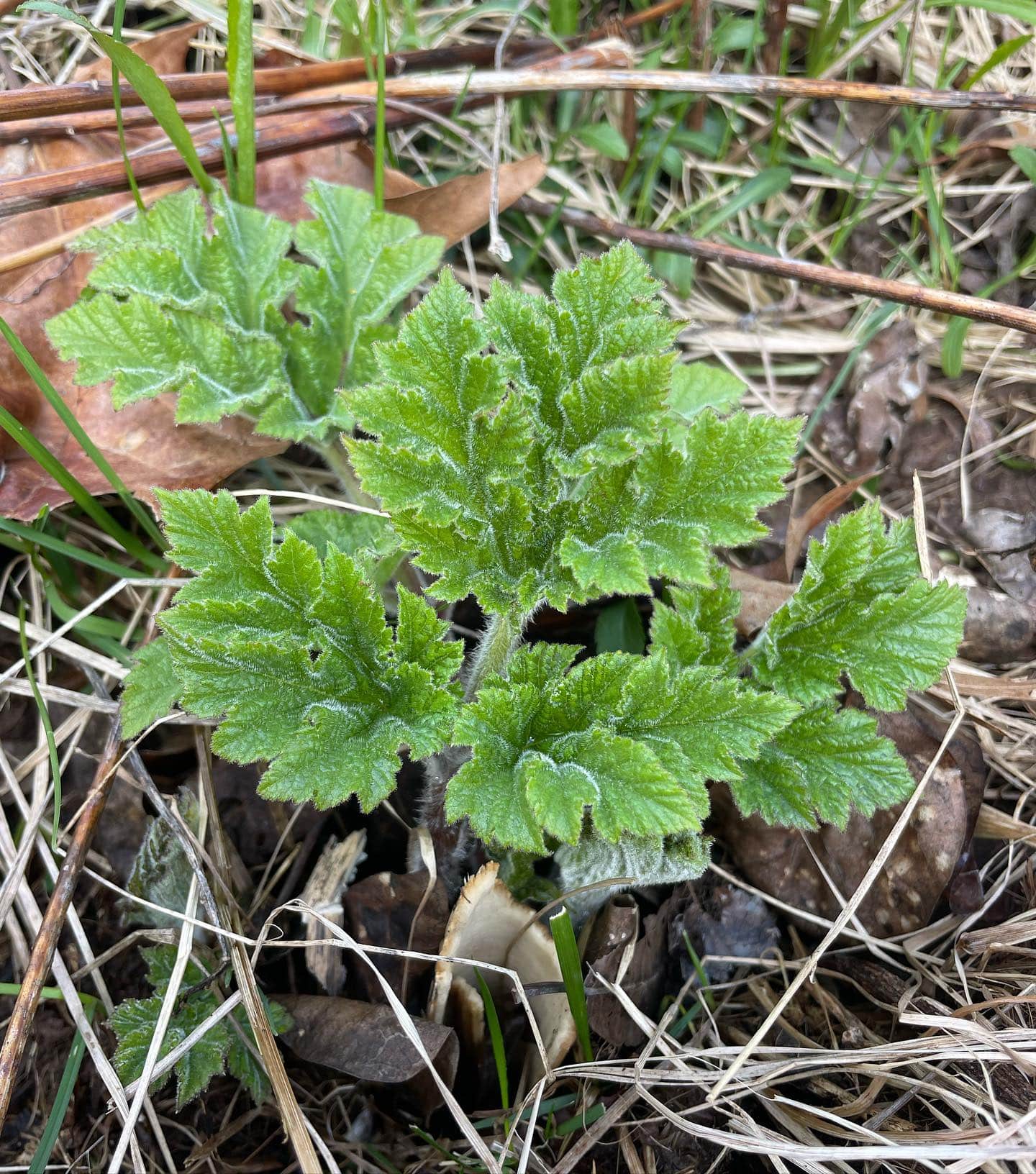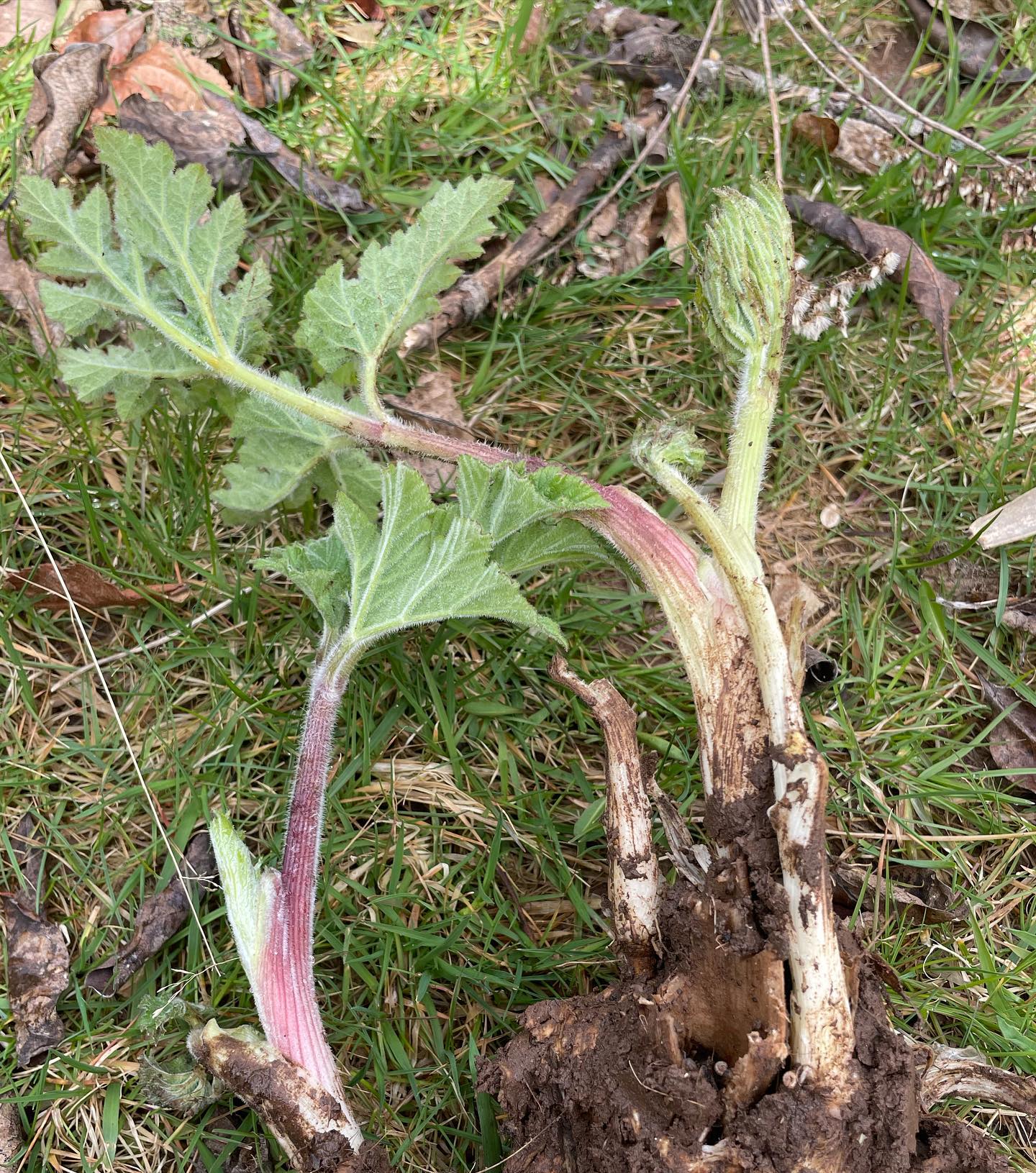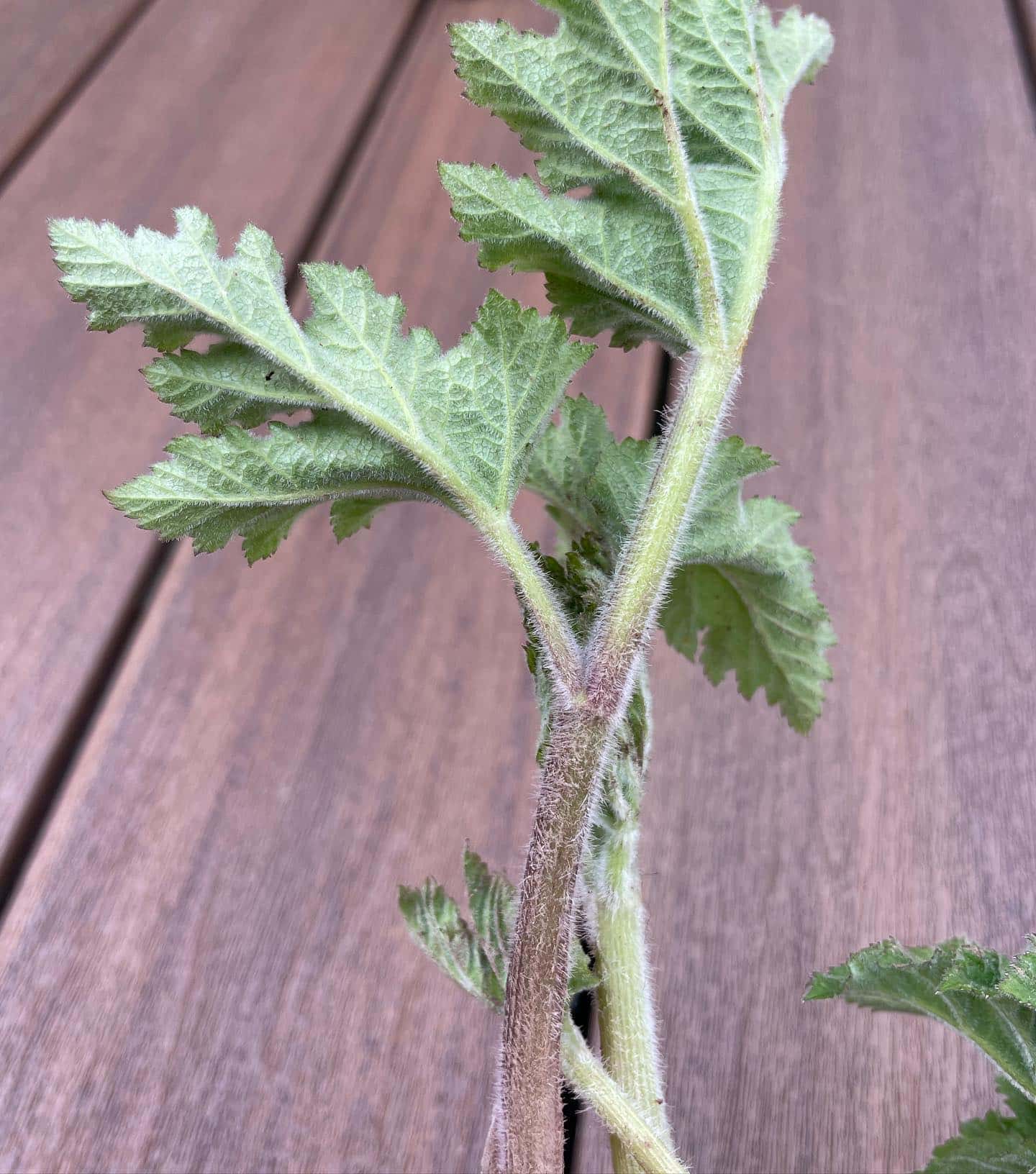Page Created by Connecticut Foraging Club
Upcoming Events | Meet the Instructors | Plant Archive | Mushroom Archive
----------------
Upcoming Events | Meet the Instructors | Plant Archive | Mushroom Archive
----------------
Cow Parsnip (Heracleum maximum) is a native perennial in the carrot (Apiaceae) family.

Cow parsnip can be found along rivers, swamps, and forest edges. It prefers partial to full sun.
Cow parsnip has 3-part, alternate, compound leaves with irregularly toothed and lobed margins. The leaves can grow to be 2 feet across at maturity.

Stems are furry and hollow. In the summer, the plant produces flat-topped flower heads with white flowers. The plant can grow up to 6 feet tall.
Gloves should be used with handling the plant as sap can cause rashes and blistering, especially on sunny days.

In the spring, young cow parsnip leaves can be collected when the plant is less than 8 inches tall. Greens should be cooked before consuming. Leaves are best used as an herb as they have a strong flavor. The flavor is reminiscent of celery, fennel, and cloves.
Stalks are edible raw after being peeled.
Flower bud clusters can be cooked like a vegetable. They make a great tempura.

In mid-summer to fall, seeds can be collected and used as a spice. The seeds are similar to Golpar, a Persian spice commonly used to flavor beans.
Although roots are technically edible, they are best left alone as they have a strong flavor, and this is a native plant.
Cow parsnip must be differentiated from the deadly water hemlock (Cicuta maculata) and poison hemlock (Conium maculatum) which both have hairless stems.
--
Written by Amy Demers, founder of the Connecticut Foraging Club. To learn more about foraging in Connecticut, check out our upcoming classes.






